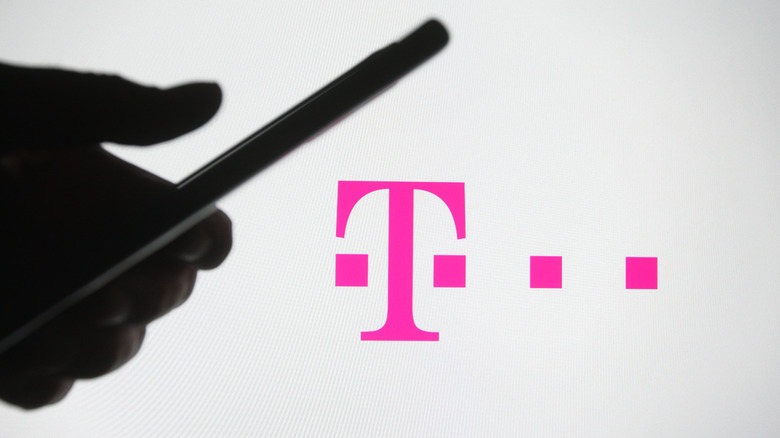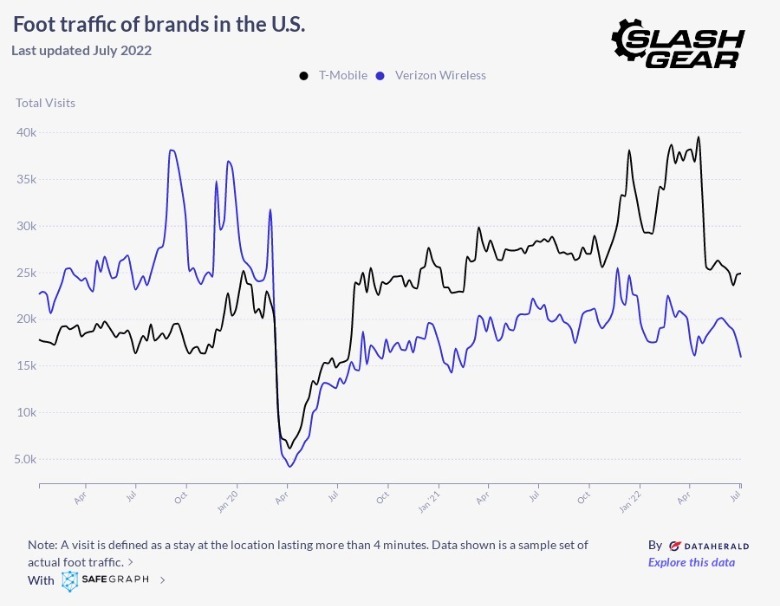T-Mobile Has Dominated Verizon Wireless In One Major Way In 2022
Based on subscriber numbers alone, Verizon is currently the largest cell carrier in the United States and T-Mobile comes in second place (via Bloomberg). However, since the coronavirus pandemic hit in 2020, T-Mobile has overtaken Verizon in one key area: the carrier somehow managed to get more customers in its stores than its rivals, and even managed to break through Verizon's pre-pandemic figures despite an overall decline in footfall since nationwide lockdowns were implemented.
While a lot of customers choose to select a plan or buy devices online or over the phone, there is still a place for physical stores. If customers have the time to drop in, a store can provide a quick fix to many common cell phone problems, offer replacement devices, or send items away for repair. They can also offer one-on-one help if a customer is struggling to use a device, and can sometimes give exclusive deals that aren't available online.
Data obtained by SlashGear shows T-Mobile has taken a strong lead when it comes to physical store popularity, but this may not mean more cash in the bank for the cellular provider. To count toward the numbers, an individual must spend at least four minutes in a store, but they don't necessarily have to buy anything or use a company's in-store services.
T-Mobile has taken the lead in store visits
Statistics compiled for SlashGear by Dataherald show that T-Mobile's stores have generated significantly more foot traffic than Verizon's since the coronavirus pandemic took hold in April 2020. The gap was at its widest in April 2022 when T-Mobile's outlets received more than double the number of visitors Verizon had. This is a complete reversal from September 2019, when T-Mobile stores had just over 17,000 weekly visitors and Verizon's had over 31,000. Despite an overall decline in foot traffic since the 2020 pandemic, T-Mobile's numbers also managed to beat Verizon's 2019 peak.
September wasn't a one-off, either. Verizon stores consistently had a higher level of footfall pre-pandemic. However, things flipped when lockdowns were implemented back in April 2020. Both brands saw a massive dip when it came to in-person store visits, though T-Mobile managed to maintain more than 5,000 weekly visitors, while Verizon dipped below that threshold. Oddly, despite the higher footfall, T-Mobile closed a higher percentage of its stores during the pandemic than Verizon did. According to Fierce Wireless, T-Mobile closed 80% of its corporate-owned stores during the pandemic, while Light Reading claims Verizon closed 70%.
Since it took the lead, T-Mobile has witnessed a 10,000-individual weekly lead in foot traffic over Verizon. The peaks and troughs of each company's footfall have been consistent across both brands. Both T-Mobile and Verizon have also seen an increase in foot traffic over the past year as things continue to return to normal following the height of the COVID-19 pandemic. The footfall dominance isn't the only piece of good news T-Mobile has had this year. In February, the company announced it had expanded its 5G ultra capacity service to reach up to 200 million people.

